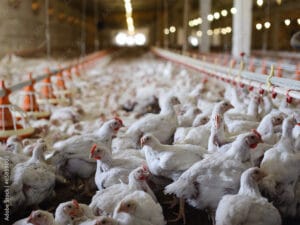Simplify Your Financial Records with Agriculture Accounting Services
Simplify Your Financial Records with Agriculture Accounting Services
Blog Article
Take Full Advantage Of Profits: The Essential Overview to Food Handling Bookkeeping
In the competitive landscape of food handling, a nuanced understanding of accountancy principles is critical for making the most of profitability. This overview explores the intricate partnership in between cost monitoring, labor effectiveness, and financial coverage, offering insights that can simplify procedures and improve decision-making. Key audit methods, coupled with the critical use technology, can change financial efficiency. Nevertheless, the real difficulty depends on carrying out these strategies properly across varied operational contexts. As we unload these essential elements, you might discover on your own doubting just how to ideal use them in your distinct environment.
Understanding Food Processing Costs

Resources costs normally represent the biggest portion of costs, necessitating cautious management of sourcing and stock degrees. Labor expenses also play a crucial role, as proficient workers are crucial for preserving top quality and effectiveness. Expenses expenses, consisting of utilities, lease, and management expenses, have to be kept an eye on to guarantee they do not erode profit margins.
In addition, equipment maintenance and devaluation can influence long-term financial health and wellness. Purchasing modern, effective equipment may incur higher preliminary prices yet can lead to minimized functional expenditures over time. Comprehending these price components allows food processing services to create reliable budgeting approaches, optimize resource allotment, and determine areas for expense reduction. Inevitably, a thorough understanding of food handling prices is essential for informed decision-making and achieving sustainable growth within the market.
Trick Audit Concepts
Efficient management of food processing costs depends on a solid foundation of accountancy concepts. These concepts function as the structure for recording, evaluating, and analyzing economic data, guaranteeing that food processing organizations can precisely assess their productivity and functional efficiency.
First, the concept of consistency is essential. It mandates that companies use the exact same accounting techniques over time, promoting reputable comparisons of monetary declarations. Next, the matching concept requires that expenditures be recorded in the exact same period as the profits they aid produce, which is critical for precise earnings measurement.
Furthermore, the price principle determines that properties ought to be videotaped at their original acquisition price, offering a clear basis for devaluation and property appraisal. The amassing basis of audit also plays a considerable duty, as it recognizes expenses and incomes when they are sustained, instead of when cash money changes hands. This technique gives a more reasonable sight of economic wellness.
Lastly, the conservatism principle encourages that possibility expenditures and liabilities should be acknowledged as quickly as they are potential, while revenues should only be acknowledged when they are guaranteed. By adhering to these crucial accountancy concepts, food handling firms can boost their economic oversight and critical decision-making.
Financial Coverage Fundamentals
Financial reporting is crucial for food handling business, as it offers a transparent sight of their economic performance and position. Timely and accurate financial records allow monitoring to make enlightened decisions, guaranteeing the company continues to be affordable and lucrative in a challenging sector.
Trick components of monetary coverage include the earnings declaration, balance sheet, and cash money flow statement. The revenue statement provides understandings into profits, prices, and net revenue, disclosing operational effectiveness.
In addition, adhering to Normally Accepted Audit Principles (GAAP) or International Financial Reporting Requirements (IFRS) is important for uniformity and credibility. Regular monetary coverage not just aids internal administration yet additionally meets external responsibilities to stakeholders, financiers, and governing bodies.
Inevitably, robust financial reporting is crucial for critical planning and risk management, enabling food handling business to browse market variations and exploit on growth opportunities efficiently.
Price Control Approaches
Maintaining a strong monetary setting is not solely about accurate reporting; it also involves carrying out reliable cost control methods (Agriculture accounting). In the food processing industry, where margins can be limited, managing prices is essential for optimizing productivity
One secret strategy is to carry out normal price evaluation. By reviewing the prices related to resources, labor, and overhanging, organizations can identify locations where financial savings can be attained. Applying a standard budgeting procedure enables much better forecasting and monitoring of expenses, making it possible for visit the website prompt modifications to be made.
One more reliable technique is to bargain positive terms with providers. Establishing long-term relationships can result in volume discounts, which straight minimize the cost of products sold. Additionally, purchasing worker training can enhance efficiency and reduce waste, adding to overall price effectiveness.
Last but not least, embracing lean production principles can simplify operations by removing unnecessary action in the production procedure. This not just reduces waste yet additionally boosts quality and rate. By concentrating on these expense control strategies, food processing firms can enhance their monetary performance and guarantee lasting growth in a competitive industry.
Leveraging Technology in Accountancy
Welcoming technology in accountancy can considerably improve performance and accuracy within the food processing market. By incorporating advanced software application remedies, food mill can automate repeated jobs such as stock, pay-roll, and invoicing monitoring. This not just reduces the potential for human error however additionally permits money teams to concentrate on tactical decision-making rather than mundane management tasks.
Cloud-based audit systems provide real-time access to financial data, allowing services to check capital, expenses, and profitability from anywhere - Agriculture accounting. This flexibility is particularly useful in a vibrant market where expense changes and supply chain difficulties are typical. In addition, making use of information analytics devices equips firms to remove workable understandings from their monetary information, bring about educated service choices that can drive success
Moreover, leveraging innovations like Expert system (AI) and Machine Learning (ML) can enhance forecasting capacities, permitting much better need planning and resource allotment. As regulatory compliance becomes significantly intricate, innovation can likewise assist in ensuring adherence to economic reporting standards and food safety and security guidelines. Eventually, purchasing technical developments in accounting is not just an operational improvement; it is a critical requirement for food processing firms aiming to grow in a competitive marketplace.

Conclusion
In special info verdict, effective monitoring of food handling expenses is important for improving success within the industry. Applying durable expense control techniques and leveraging technology for automation and information analytics additionally enhance operational performance.
Comprehending the costs linked with food handling is important for businesses intending to preserve profitability Home Page and competition in a dynamic industry. Comprehending these cost parts enables food processing organizations to establish effective budgeting methods, optimize source allotment, and identify locations for cost decrease. Ultimately, a thorough grasp of food handling costs is essential for educated decision-making and achieving lasting growth within the sector.
Furthermore, the price principle determines that assets must be tape-recorded at their initial purchase expense, giving a clear basis for depreciation and property assessment. By concentrating on these cost control methods, food processing business can enhance their monetary efficiency and ensure lasting development in a competitive market.
Report this page